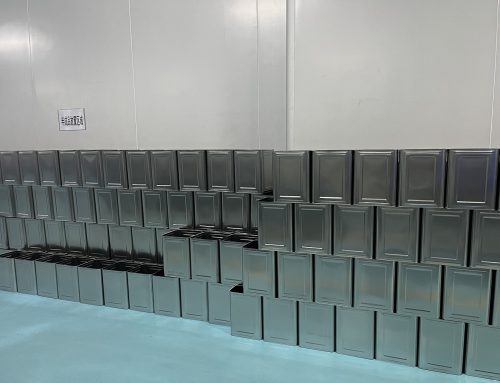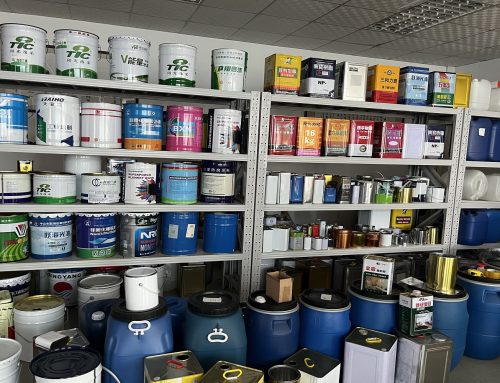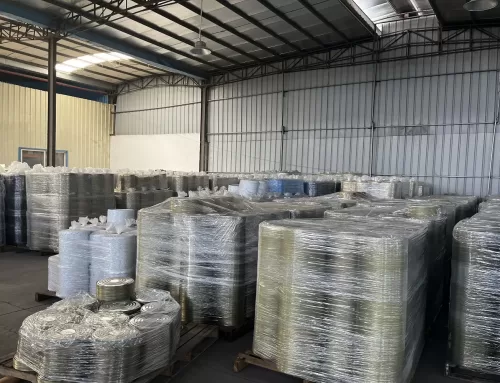The main manufacturing process of the tank body of the canning equipment is as follows: coil conveying→coil lubrication→blanking, stretching→can body forming→trimming→cleaning/drying→stacking/unloading→priming→drying →Color printing→priming coating→drying→internal spraying→internal drying→can mouth lubrication→necking→rotating compression neck.
In the technological process, blanking, stretching, can body forming, trimming, diameter reduction, rotary compression diameter/flanging processes require mold processing, among which blanking, stretching and can body forming processes and molds are the key. The technological level and the level of mold design and manufacturing directly affect the quality and production cost of the can.
Tin can manufacturing process analysis
(1) Blanking-stretching compound process. During stretching, the material at the edge of the blank forms a cup along the radial direction. Therefore, the unit body in the plastic flow zone is a three-way stress state under bidirectional compression and unidirectional tension, as shown in Figure 1. Due to the action of the arc of the convex mold and the arc of the drawing female mold, the wall thickness of the lower part of the cup is reduced by about 10%, and the thickness of the cup mouth is increased by about 25%. The size of the arc at the corner of the cup has a greater impact on the subsequent process (can body forming). If the control is not good, it is easy to break the can. Therefore, the blanking drawing process must consider the following factors: the diameter and drawing ratio of the cup, the arc of the punch, the arc of the drawing die, the gap between the protrusion and the die, the mechanical properties of the aluminum, the friction performance of the mold surface, and the material Surface lubrication, stretching speed, ear protrusion rate, etc. The production of the lugs is mainly determined by two factors: one is the performance of the metal material, and the other is the design of the drawing die. The protrusions appearing at the highest point of the cup are also the lowest point, which will affect the formation of the can body, resulting in incomplete trimming and an increased rejection rate.
“Based on the above analysis, it is determined that the selected stretching ratio m=36.55% for the stretching process, the blank diameter Dp=140.20±0.0lmm, and the cup diameter Dc=88.95mm.
(2) Can body forming process. Analysis of thinning and stretching process. During the stretching process, the metal concentrated in the tapered part of the cavity is the deformation zone, and the force transmission zone is the barrel wall and the bottom of the shell after passing through the cavity. In the deformation zone, the material is in a three-dimensional stress state of axial tension, tangential compression, and radial compression. Under the action of the three-dimensional stress, the metal has refined grains and increased strength, accompanied by work hardening. In the force transmission area, the stress condition of each part of the material is different. The stress condition of the metal located in the round corner area of the punch is the worst. It is stretched in the axial and tangential directions and compressed in the radial direction. The thinning trend of the material is serious, and the metal is easy to break from here, which leads to the failure of stretching. Comparing the stress state of the metal in the deformation zone and the force transmission zone, it can be seen that whether the thinning and stretching process can be carried out smoothly depends on the magnitude of the tensile stress on the metal at the fillet of the tensile punch. When the tensile stress exceeds the material strength limit It will cause breakage, otherwise the stretching process can proceed smoothly. Therefore, reducing the tensile stress during the stretching process becomes the key to ensuring the smooth progress of the stretching.
The selection of the stretching ratio for thinning is: Re-stretching: 25.7%, the first thinning stretch: 20%~25%, the second thinning stretch: 23%-28%, the third Secondary thinning and stretching: 35%~40%.
In the forming process, there are many factors that affect the tensile stress inside the metal, including the cone angle of the die. The value of is directly related to the flow characteristics of the metal in the deformation zone, and then affects the size of the forming force required for stretching. Therefore, whether its value is reasonable or not has an important impact on the implementation of the process. When α is small, the range of the deformation zone is relatively large, the metal is easy to flow, and the distortion of the grid is small. With the increase of α, the range of the deformation zone decreases, the deformation of the metal is concentrated, the flow resistance increases, and the grid is distorted seriously. Moreover, as the cone angle of the die increases, the strain of the material in the deformation zone increases accordingly. This shows that when the cone angle of the die is larger, not only the deformation range of the metal is concentrated, but the amount of deformation increases rapidly, which makes the metal processing in the deformation zone. The hardening phenomenon is intensified, causing the stress inside the metal to rise, which adversely affects the stretching. On the other hand, when α is too large or too small, the tensile force will increase. The reason is: when α is too large, the metal flows sharply, the work hardening effect of the material is significant, and as the cone angle increases, the concave The component of the mold cone surface that hinders the flow of metal increases, so the required stretching force increases; when. Too small, although the turning point of the metal flow is small, because the contact cone between the metal and the concave surface in the deformation zone is long, the total friction resistance on the cone surface is large, so although the grid distortion is small, the total tensile force increases.
It can be seen that the reasonable determination of the cone angle of the cavity should also consider the deformation characteristics of the material in the deformation zone and the friction between the mold and the workpiece. The determination of the reasonable range of the cone angle of the cavity has a direct impact on the stretching process. The process test shows that for the CCB-1A aluminum cans 3104H19, the reasonable value of the cone angle of the die is α=5°~8°.
Bottom forming process analysis. The bottom of the can is formed at the end of the punch stroke, using a reverse re-stretching process. Figure 4 is a schematic diagram of the stress status of the can bottom forming. The bottom forming force mainly depends on the nature of the frictional force and the size of the blank holder force. Generally, the thickness and strength of the material are a pair of contradictions. The thinner the material, the lower the strength. Therefore, lightweight technology requires reducing the diameter of the tank bottom and designing a special tank bottom shape. The process test shows that if the angle α1 of the outer wall of the tank bottom groove is greater than 40°, the pressure resistance of the tank bottom will be greatly reduced. Considering the formability of the metal, the punch arc R cannot be less than 3 times the thickness of the material. But if R is too large, the strength will be reduced. The arc R1 of the spherical surface and the inner wall of the tank bottom groove should be at least 3 times the material thickness, usually R1 is 4~5 times the material thickness. Reducing the angle α2 of the inner wall of the tank bottom groove will increase the strength, and most of the production uses less than 10°.
There are two failure points at the bottom of the tank: one is the bottom spherical surface; the other is the arc R of the tank bottom connecting the spherical surface and the side wall. The strength of the spherical surface of the tank bottom depends on the following factors: the elastic modulus of the material, the diameter of the bottom, the strength of the material, the radius of the spherical surface, and the degree of thinning of the metal when the bottom is formed. The radius of the spherical surface of the tank bottom is usually determined by the formula R ball=d1/0.77, and the actual R ball=45.72mm
Mold design and manufacturing
The stretching process of the tank body is actually the stretching process of the cylindrical part. During the stretching process, the flange part of the material is easy to lose stability under the action of compressive stress, resulting in wrinkles. Therefore, it is necessary to consider setting up a blank holder to prevent wrinkles. Device. When the material passes through the die, the fillet of the die is a transition zone, and its deformation is more complicated. In addition to radial stretching and tangential compression, it is also subject to bending. Therefore, the choice of die fillet is particularly important. After the material passes through the corners of the concave die, it is in a stretched state. Since the tensile force comes from the pressure of the punch, it is transmitted through the corners of the punch. The material at the corners of the punch becomes thinner the most, and it becomes the most easy to break here. Dangerous section.




